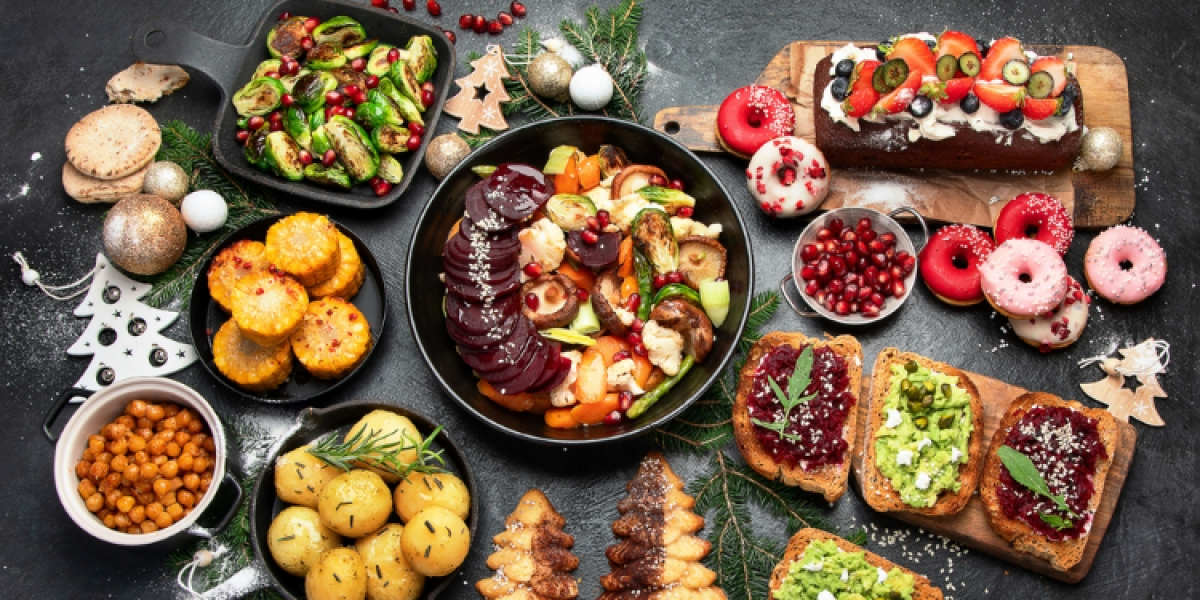
Expat life can be a fantastic adventure, but it often demands extra organization and adaptation, especially during the holiday season. For those on a vegetarian or vegan diet, embracing foreign culinary traditions can be rewarding and challenging. Here are some tips to help you fully enjoy the festive season while living abroad and staying true to your dietary preferences.
Discover local cuisine
Living abroad provides a unique opportunity to explore different flavors and culinary traditions. Dive into the local cuisine and check out the vegetarian and vegan options that might be available. You might be pleasantly surprised by some of the traditional dishes.
Communicate your preferences
Before the celebrations, make sure to communicate your dietary preferences to the hosts or organizers. In most cases, people are understanding and will be happy to prepare dishes adapted to your diet.
Take part in the preparations
Take part in the culinary preparations. This allows you to propose vegetarian or vegan alternatives for specific dishes, showing your commitment to contributing to the festivities.
Organize your own celebrations
If you're unable to find suitable options at local celebrations, consider hosting your own vegetarian or vegan festivities. Invite expatriate friends or colleagues to share a festive meal according to your dietary preferences.
Some ideas for vegetarian dishes to serve to your guests
Cauliflower roast baked in the oven: marinated with savory spices and roasted until it's crispy on the outside and tender on the inside.
Potato and mushroom gratin: slices of potato and mushroom cooked in a creamy sauce, au gratin in the oven.
Winter vegetable tart: filled with seasonal vegetables, such as carrots, parsnips and leeks, in a golden crust.
Spinach and ricotta lasagna: layers of pasta, sautéed spinach and ricotta, topped with a homemade tomato sauce.
Couscous with roasted vegetables: a blend of light couscous with roasted autumn vegetables and a fresh vinaigrette.
Herbed Hasselback potatoes: thinly sliced potatoes seasoned with herbs and butter, then roasted in the oven.
Vegan mushroom pâté: sautéed mushrooms, shallots and garlic wrapped in golden puff pastry.
Mushroom and truffle risotto: a creamy risotto with sautéed mushrooms and a touch of truffle for a luxurious flavor.
Vegetable cannelés: individual flans made from mixed vegetables and baked to a soft texture.
Vegan pumpkin pie: a pumpkin pie made with vegan milk, pumpkin puree and autumnal spices.
Quinoa salad with cranberries and walnuts: quinoa mixed with dried cranberries, walnuts, fresh herbs and a light vinaigrette.
Spinach and feta puff pastry: puff pastry triangles filled with a spinach-feta mixture, perfect as an aperitif.
Vegan dishes you should try
Mushrooms stuffed with walnuts: portobello mushrooms stuffed with a mixture of walnuts, herbs and rolled oats.
Winter vegetable pie: a delicious vegan pie filled with winter vegetables like carrots, sweet potatoes and spinach.
Herb-roasted seitan: a seitan roast seasoned with aromatic herbs and oven-roasted for a tender texture.
Roasted garlic mashed potatoes: creamy mashed potatoes with roasted garlic for a touch of flavor.
Vegan lasagna with grilled vegetables: layers of lasagna filled with grilled vegetables, tomato sauce and vegan béchamel sauce.
Lentil dumplings with cranberries: lentil dumplings seasoned with dried cranberries, nuts and spices.
Quinoa salad with pomegranate and avocado: quinoa mixed with pomegranate seeds, avocado pieces, walnuts and a lemon vinaigrette.
Pan-fried Brussels sprouts and hazelnuts: Brussels sprouts sautéed with hazelnuts for a crunchy flavor combination.
Wild mushroom risotto: a creamy risotto made with wild mushrooms, white wine and garlic.
Spinach and tofu puff pastry: individual puff pastries filled with a spicy spinach-tofu mixture.
Vegan quiche casserole: a vegan quiche with a silken tofu base and garnished with seasonal vegetables.
Caramelized pecan tart: a sweet-tart with caramelized pecans, free from animal products.
How to plan your meals for the festive season
Discover local markets
Check out local markets for fresh vegetarian ingredients. This way, you can cook delicious and diet-friendly dishes during the holidays.
Learn a few useful phrases
If you're not fluent in the local language, learn a few key phrases related to your diet. This can make it easier to communicate with chefs or waiters and ensure that your preferences are clearly understood.
Share your recipes
Share your vegetarian or vegan recipes with local friends. This can spark interest and promote a cultural exchange centered around cooking.
Be open to adaptations
Be ready to make adjustments to your diet while still respecting local traditions. You can make a few tweaks to accommodate your choices without losing the essence of the traditional dishes.
Explore local vegetarian/vegan restaurants
Discover vegetarian or vegan restaurants in your expatriate area. Some places might have specially crafted festive menus catering to those following this type of diet.
Introduce your friends and family to vegetarian/vegan cuisine
If you're invited to stay with local friends, bring a vegetarian or vegan dish to share. This way, everyone gets to taste your cooking while celebrating the diversity of flavors.
Vegetarian and vegan ingredients you'll find everywhere
If you're a vegetarian, you're pretty much guaranteed to find the following ingredients in your expat country:
Vegetables: fundamental to a vegetarian diet, they offer a variety of flavors, textures and nutrients.
Fruit: Rich in vitamins, minerals and fiber, fruit adds a sweet, fresh touch to vegetarian meals.
Cereals: whether rice, quinoa, wheat or oats, cereals are an important source of carbohydrates and fiber.
Pulses: beans, lentils, chickpeas and other pulses are essential plant proteins.
Dairy products: For vegetarians, dairy products, milk, cheese, and yogurt are sources of calcium and protein.
Eggs: a source of animal protein often consumed by vegetarians.
If you are vegan :
Vegetables and fruit: they form the basis of a vegan diet.
Wholegrain cereals: quinoa, wheat and other wholegrain cereals are sources of carbohydrates and fiber.
Pulses: essential for vegetable proteins, they offer a variety of textures and flavors.
Soy products: tofu, tempeh and soy milk are popular protein-rich substitutes.
Plant-based milk: alternatives to traditional milk, such as almond, soy or oat milk.
Vegetable oils: olive, coconut and rapeseed oils are used for cooking and seasoning.
Fructose: a natural sweetener often used as an alternative to sugar.
Seeds and nuts: rich in essential fatty acids, protein and fiber.
Seaweed: a source of nutrients, particularly omega-3 fatty acids.
Vegan meat substitutes: plant-based products that mimic the texture and taste of meat, such as vegan sausages, burgers and so on.



















